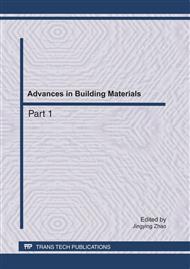p.352
p.356
p.361
p.366
p.371
p.376
p.380
p.385
p.389
An Elastoplastic-anisotropic Damage Model for Concrete
Abstract:
An elastoplastic-anisotropic damage constitutive model for the description of nonlinear behavior of concrete is presented. The yield surface is developed in effective stress spaces, which takes into account the hardening effect and better match the experimental data. The stiffness degradation and softening effect are considered in the framework of continuum damage mechanics formulation. The second-order damage tensor is used to characterize the anisotropy induced by the orientation of microcracks. In order to simulate the unilateral effect, the elastic Helmholtz free energy is decomposed into a volumetric part and a deviatoric part. The different behavior under tensile and compressive loadings is modeled by using different variables in effective stress and damage tensor. Numerical results of the model accord well with experimental results at the material and structural levels.
Info:
Periodical:
Pages:
371-375
Citation:
Online since:
May 2011
Keywords:
Price:
Сopyright:
© 2011 Trans Tech Publications Ltd. All Rights Reserved
Share:
Citation:


